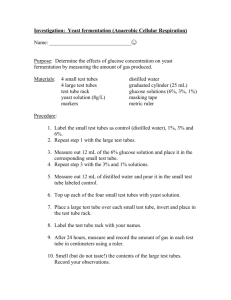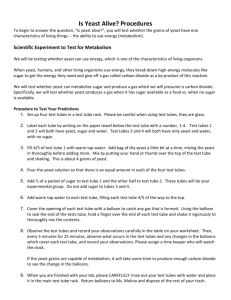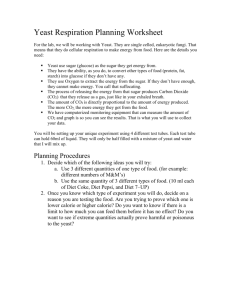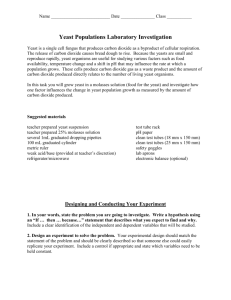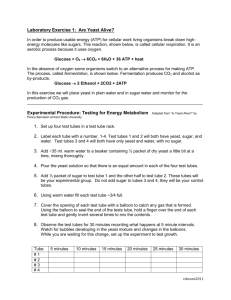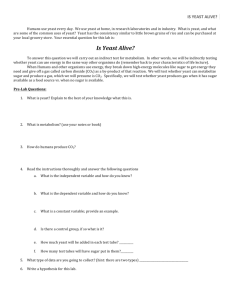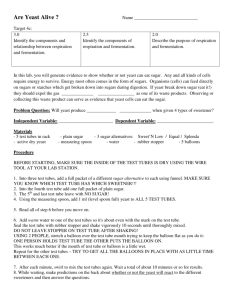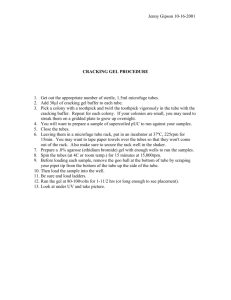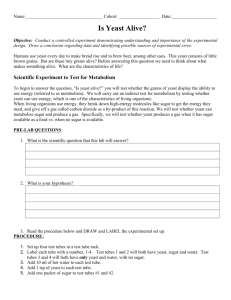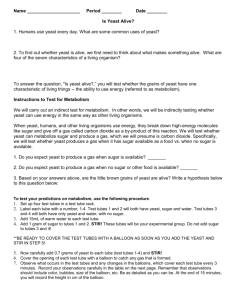Is Yeast Alive? Procedures - Kihei Charter STEM Academy Middle
advertisement
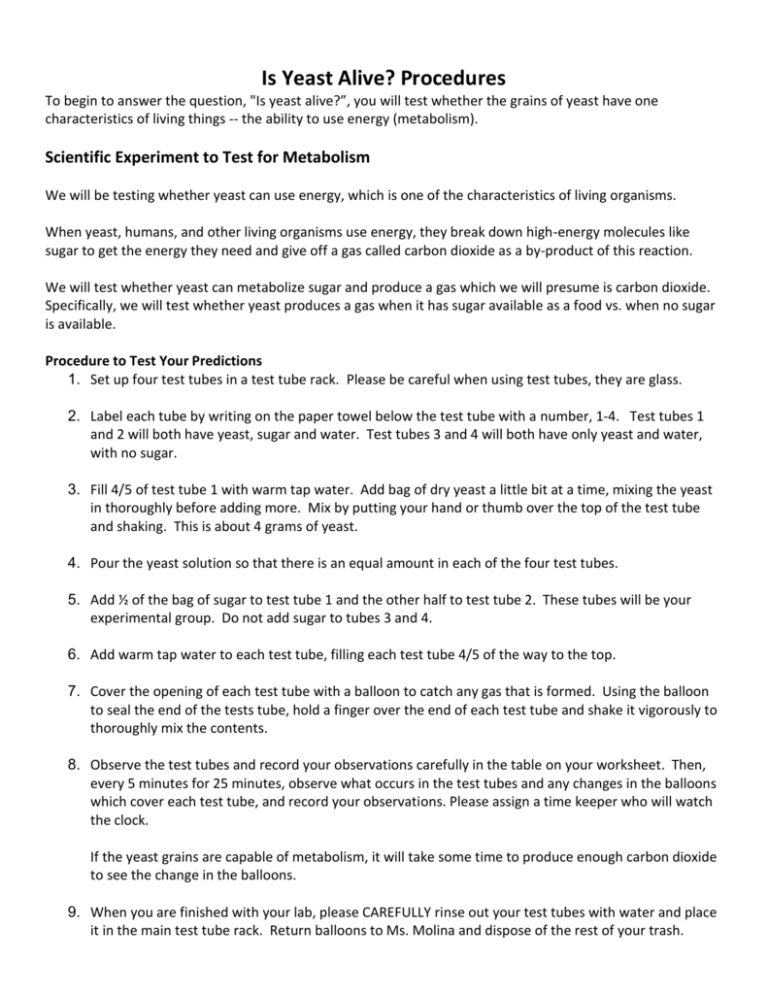
Is Yeast Alive? Procedures To begin to answer the question, "Is yeast alive?”, you will test whether the grains of yeast have one characteristics of living things -- the ability to use energy (metabolism). Scientific Experiment to Test for Metabolism We will be testing whether yeast can use energy, which is one of the characteristics of living organisms. When yeast, humans, and other living organisms use energy, they break down high-energy molecules like sugar to get the energy they need and give off a gas called carbon dioxide as a by-product of this reaction. We will test whether yeast can metabolize sugar and produce a gas which we will presume is carbon dioxide. Specifically, we will test whether yeast produces a gas when it has sugar available as a food vs. when no sugar is available. Procedure to Test Your Predictions 1. Set up four test tubes in a test tube rack. Please be careful when using test tubes, they are glass. 2. Label each tube by writing on the paper towel below the test tube with a number, 1-4. Test tubes 1 and 2 will both have yeast, sugar and water. Test tubes 3 and 4 will both have only yeast and water, with no sugar. 3. Fill 4/5 of test tube 1 with warm tap water. Add bag of dry yeast a little bit at a time, mixing the yeast in thoroughly before adding more. Mix by putting your hand or thumb over the top of the test tube and shaking. This is about 4 grams of yeast. 4. Pour the yeast solution so that there is an equal amount in each of the four test tubes. 5. Add ½ of the bag of sugar to test tube 1 and the other half to test tube 2. These tubes will be your experimental group. Do not add sugar to tubes 3 and 4. 6. Add warm tap water to each test tube, filling each test tube 4/5 of the way to the top. 7. Cover the opening of each test tube with a balloon to catch any gas that is formed. Using the balloon to seal the end of the tests tube, hold a finger over the end of each test tube and shake it vigorously to thoroughly mix the contents. 8. Observe the test tubes and record your observations carefully in the table on your worksheet. Then, every 5 minutes for 25 minutes, observe what occurs in the test tubes and any changes in the balloons which cover each test tube, and record your observations. Please assign a time keeper who will watch the clock. If the yeast grains are capable of metabolism, it will take some time to produce enough carbon dioxide to see the change in the balloons. 9. When you are finished with your lab, please CAREFULLY rinse out your test tubes with water and place it in the main test tube rack. Return balloons to Ms. Molina and dispose of the rest of your trash.
